Forklift trucks are used in warehouses and storage yards to move heavy objects. There are ten main types of forklift truck, some of which require you to be able to drive.
Hand pallet trucks or ‘pump trucks’
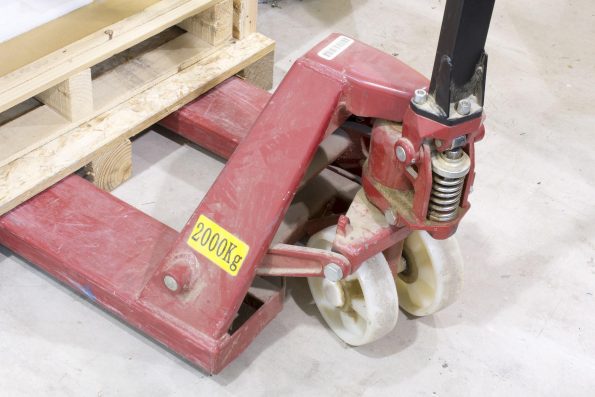
Hand pallet trucks can carry a surprisingly heavy load
Hand pallet trucks are often called pump trucks because the operator pumps the handle to lift the load. They are cheap, strong and sturdy and useful for moving pallets around a warehouse floor where they don’t need to be lifted to any height.
The operator slides the forks into the pallet, pumps the handle, then the forks lift the pallet a few centimetres. The front wheels are mounted inside the forks while the back wheels are at the base of the handle. To turn the truck, the operator simply swings the handle.
These types of trucks are unsuitable for steep ramps ground as the braking system (if fitted) is not particularly strong, the tines (forks) can’t be angled backwards to stop loads from slipping off, and they don’t lift the load high enough to clear any change in gradient.
Rough terrain versions are available with bigger, pneumatic wheels.
Powered pallet trucks or ‘walkie trucks’

The walkie truck has built-in power to lift the load and to help move forwards and backwards rather than the operator having to push or pull it. The principal is similar to the pump truck and allows for quick movements of small loads in a warehouse.
Stock picker, cherry picker or order picker
In a stock picker, the operator stands in a compartment which is lifted to allow them to pick stock off shelves. While it’s not technically a ‘forklift’ it operates on the same principles as a forklift truck with a personnel cage.
Stock pickers are usually electric which means they need to be plugged in or attached to a docking station periodically as they run on an internal battery.
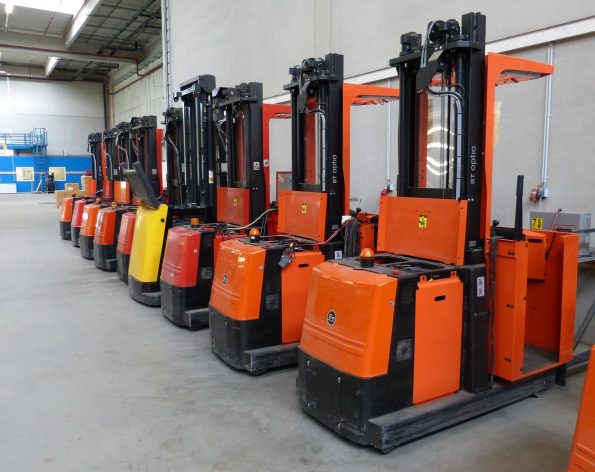
Electric-powered stand-up forklift trucks plugged in and charging
Counterbalance
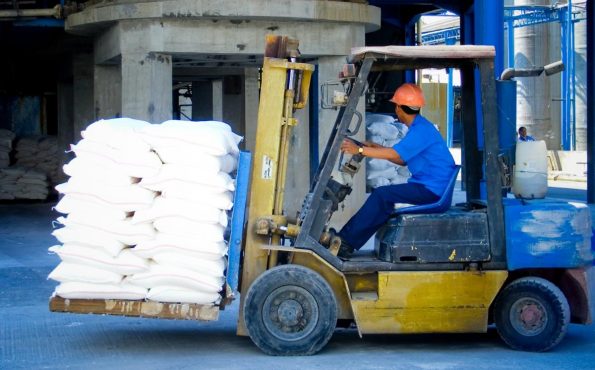
A 4-wheel counterbalance truck carrying a load
Counterbalance forklift trucks are the most common kind. A large weight (or counterbalance) at the back prevents the truck from tipping over when the forks are loaded. The operator simply drives up to the pallet or rack, lifts or drops the load then backs up.
Some trucks have extendable forks or can have forklift extensions added.
They will usually be diesel or propane-powered.
Three-wheeled counterbalance

The three-wheeled counterbalance forklift truck is essentially the same as a counterbalance truck but has much better manoeuvrability so is useful in warehouses with tight aisles and sharp corners. The truck might still have four wheels, but the configuration is at three points. These forklifts are inherently less stable than four-wheel versions. They come into their own when aisles are around 3-3.5m wide.
It’s more common to find electric three-wheel forklifts than electric four-wheel forklifts.
Pallet stackers
Pallet stackers are solely designed to lift and stack pallets. They can be manual or electric and are cheaper than buying a counterbalance forklift. They are useful for warehouses where there are not huge numbers of movements and the time-saving of a counterbalance truck isn’t as important.
Reach trucks
Reach trucks can usually reach loads over 10m tall and are used in warehouses with high aisle setups that maximise the space. Some have a seat for the operator while others have the operator standing.
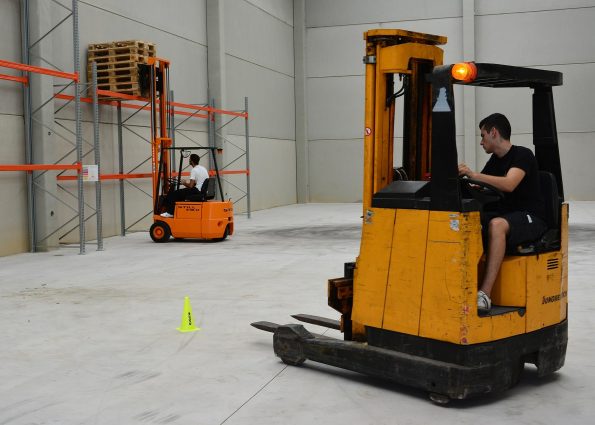
This reach truck has a carriage and mast which extends forwards as well as upwards
Sideloaders
The forks are on the side of the truck rather than in front. They are useful for handling longer loads such as timber and pipes, and are good for narrow aisles.
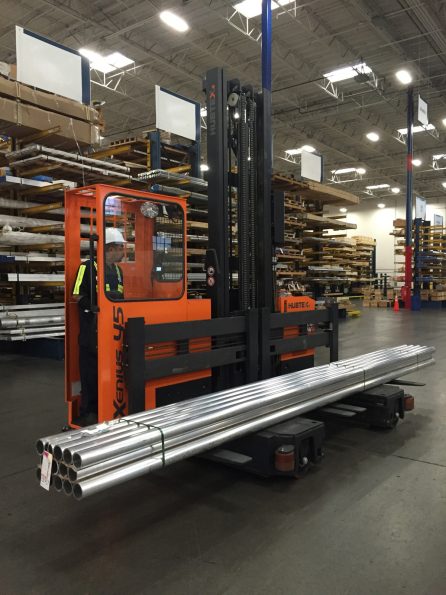
Teletrucks or telescopic handlers

Telescopic handlers can be fitted with many different attachments, not just forks
A telehandler has its attachment on a boom.
Variations of forklift trucks
Articulated forklifts
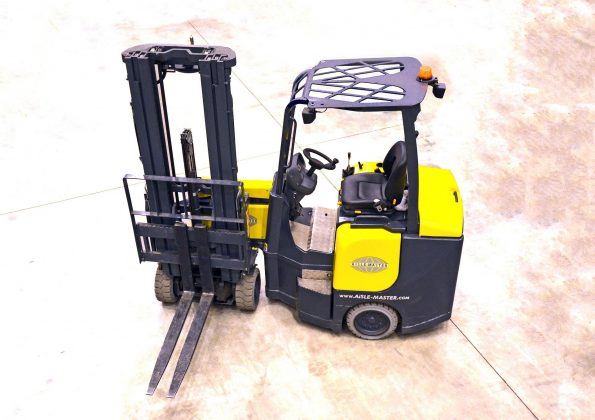
Articulated forklifts give a better turning circle than a traditional 4-wheel counterbalance truck
Articulated forklifts are counterbalance trucks that allow for manoeuvring in tighter spaces.
Off-road forklifts
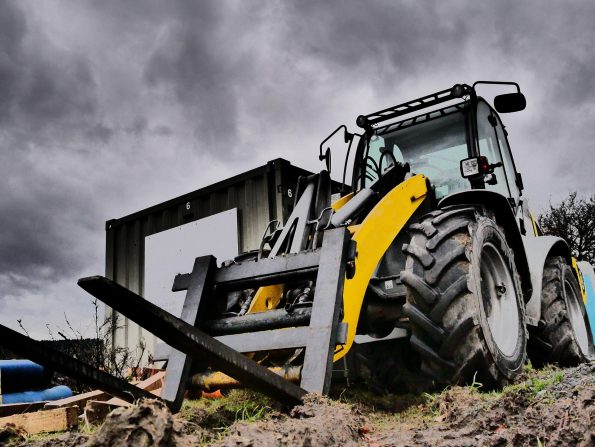
With wheels designed to work on loose soil and mud, offroad forklifts are useful for building sites and farms
Off-road forklifts have large pneumatic wheels and suspension and are often used in farming operations.
Truck-mounted forklift

For specialist applications, or where a delivery driver may need to unload items where a forklift isn’t usually available, truck-mounted forklift trucks are carried on the truck itself. They can be dismounted to allow the driver to unload the truck. They are an alternative to a truck-mounted crane in some situations.
